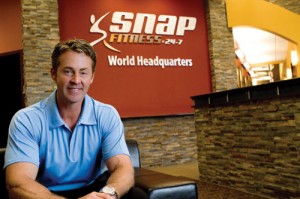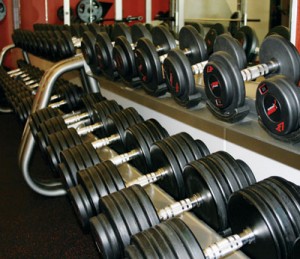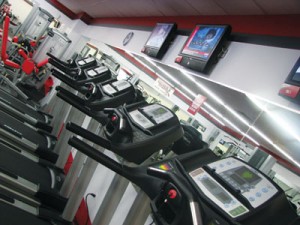 In his early 20s Peter Taunton was attempting to turn around a club that was almost $100,000 in debt. Sitting at his home in Willmar, Minn. he pondered how he would make payroll the next day. As the morning sun came shining through the window, a weary-eyed Taunton had stayed up all night with no solution to show. The next day, he walked into the club and, somehow, enough money found its way into the club and payroll was made — from there everything was up and up.
In his early 20s Peter Taunton was attempting to turn around a club that was almost $100,000 in debt. Sitting at his home in Willmar, Minn. he pondered how he would make payroll the next day. As the morning sun came shining through the window, a weary-eyed Taunton had stayed up all night with no solution to show. The next day, he walked into the club and, somehow, enough money found its way into the club and payroll was made — from there everything was up and up.
Developing Snap
Taunton had come a long way when he first developed the Snap Fitness idea. He had sold the big box clubs that he conquered in his 20s and was looking for something else to spark his interest. “I was sitting at home one day when I started thinking about those clubs,” Taunton said. “I was thinking about how the racquetball courts, the pools and the group fitness studios sat empty most of the day. What if I could design a club that had the bare essentials?”
Taunton took his 24,000-square-foot club and broke it down into a 3,000-square-foot club that could fit easily into neighborhood strip malls. “I know I won’t appeal to the people that need childcare and swimming pools, but those aren’t my customers,” he explained. “In my 3,000-square-foot Snap Fitness I wanted it to be full of the best equipment money could buy. I wanted my customers to feel happy.”
Snap Fitness was designed to give members the basics, but also the impression of great value for their dollar. “People are always drawn to value,” Taunton said. “It’s a strong word in this industry and it gets undermined often.”
Taunton said his members don’t expect their club to be the cheapest in town, but they expect it to be the most convenient. “My club has 24-hour access and they have access to over 1,100 locations — it’s a very compelling product,” he said. “We tell our franchisees, you won’t beat certain people on price, but you can beat them on service. At Snap Fitness facilities there are no contracts and we promise state-of-the-art equipment. A lot of people look at that, and when it comes to their well-being, they don’t want to compromise their ability to get a good workout with overcrowded gyms.”
The major part of success throughout Taunton’s life has been his ability to connect with customers. He was taught the personal skill by his father who owned a grocery store in his hometown of Chanhassen, Minn. “In the 28 years in the industry, what has not changed has been the fundamentals of the business,” Taunton explained. “One, your club needs to be clean; two, you need to engage your members; and three, you need to embrace your community. I don’t care how you do it. The message may change, but if you focus on those three things there is a very good probability you will survive in this industry.”
Taunton is the seventh and youngest child in his family. As each child in the family became old enough to handle responsibility, they went to work. “I started when I was about 8 years old and I was selling popcorn outside of a grocery store,” he said. “That was my first foray into dealing with people.”
It was the idea of Taunton’s father Bill, that he sold popcorn. “It was great accountability to manage expenses and make sure I could buy supplies and make a profit,” Taunton said. “What was a great learning experience was learning how to communicate with people. I’m sure there are thousands of kids that do it with a lemonade stand, but it was a great business opportunity for a young kid.”
Each day that Taunton arrived out in front of the store, he sold popcorn and watched his father operate. “All those years selling popcorn and dealing with customers, hanging around my dad at the grocery store, I got to see him interact with people and he was very good, very gracious, very humble,” Taunton said of his father. “Even though he was the owner, he would bag your groceries and take them out to your car. A great quality, I think.”
All those years watching the extensive amounts of customer service on display from his father, Taunton naturally implemented them within Snap. “Anyone can rent a space and put equipment in it,” Taunton said. “We want our franchisees to know that it’s more than that. You have to get involved in the community and get involved in the membership of the club.”
Assuring great value throughout an entire brand with stores operated individually by franchisees could be troublesome. However, Taunton has found a way. “We have controls inside corporate that help manage and market the clubs,” he said. “We have a team of guys that drive around the country installing components for new stores, and while they do that they will drop into stores along the way. Some franchises do a good job of policing other franchisees in their area.”
At the heart of every great company is a great team and for that team to create a successful business they must be well endowed with an understanding of research. At Snap Fitness, a company that has clubs in the U.S., Canada, Mexico, New Zealand, Australia and India, research has become second nature.
“We research because more and more you are seeing things like Facebook,” Taunton said. “The 35-year-old is making their grandparents set up a Facebook account because that’s how people communicate. It’s growing all the time. For me, being in the industry and always having to be forward thinking, I’m always thinking about better ways to stay in contact with members and this is one where if you aren’t on it, you’re missing the game.”
Facebook was the example of how research came into play in Snap’s marketing strategy. Taunton said Snap has utilized Facebook and Twitter because they were easy ways to stretch their marketing budget.
For Snap the goal is to hit as many targets as possible. “For us it’s not so much cutting cost, it’s what percentage of your revenue is on your advertising budget,” Taunton explained. “It can give you more touch points with better results because you are having more touch points with the same budget. We can contact members through texting, Twitter or Facebook. There are so many more options and in many cases those marketing forms are cheaper than direct-mail marketing.”
When expanding to different countries, Snap had to look at everything from fitness levels of the people in the country to how Snap would need to be represented. “For example, we don’t have to set up a base in Canada or Mexico,” Taunton said. “We can call the shots from our headquarters here.”
However, when Snap decided to reach out to places like India and Australia, the game was completely different. “Every culture is a little different,” Taunton explained. “You have to understand the competition. In India, I was told I was going to fail. But, people in India, in terms of wanting to get fit, are no different than anywhere else in the world. We took our great product over there and that resonates with people in India. We don’t just jump into these countries, we do a fair amount of research before we jump into these clubs.”
According to Taunton, in Australia, people weren’t accustomed to exercise routines like Americans. They were more into exercising by riding bikes, running, surfing or playing sports. As a country, Australia was very active, but Snap had to discover how to move their energy into the club setting. “First and foremost, you have to have a good product to deliver to the consumer,” Taunton said. “You have to put quality products, like Matrix, Cybex and Octane into the club, keep the club clean and be involved in the members and the community. You have to make a difference for people.”
Everything for Snap has involved impeccable research. From helping franchisees find the best locations for their Snap Fitness to finding new top equipment vendors, Taunton and his team spend time analyzing every detail of the business. It is that detail that has taken Snap to over 1,000 clubs and has allowed them to be a worldwide presence in the industry. -CS











Comments 0